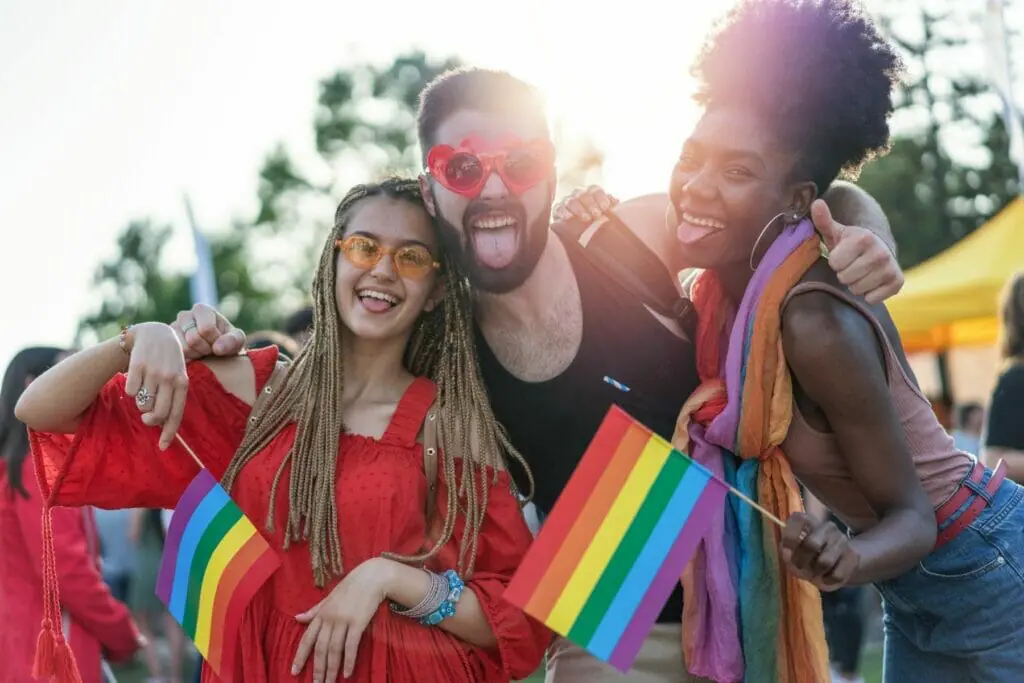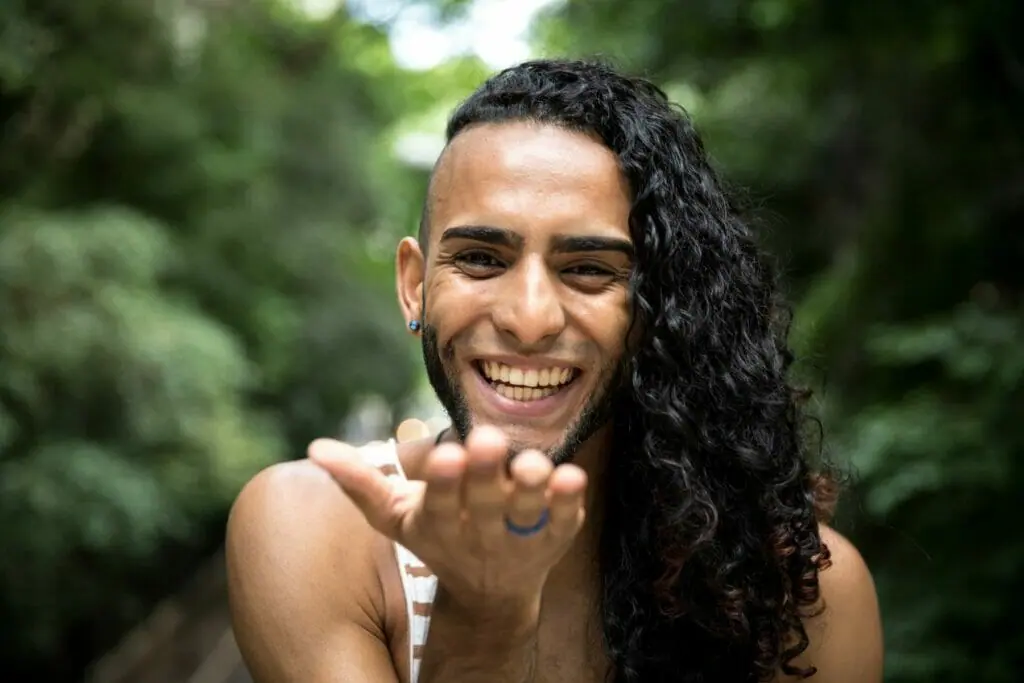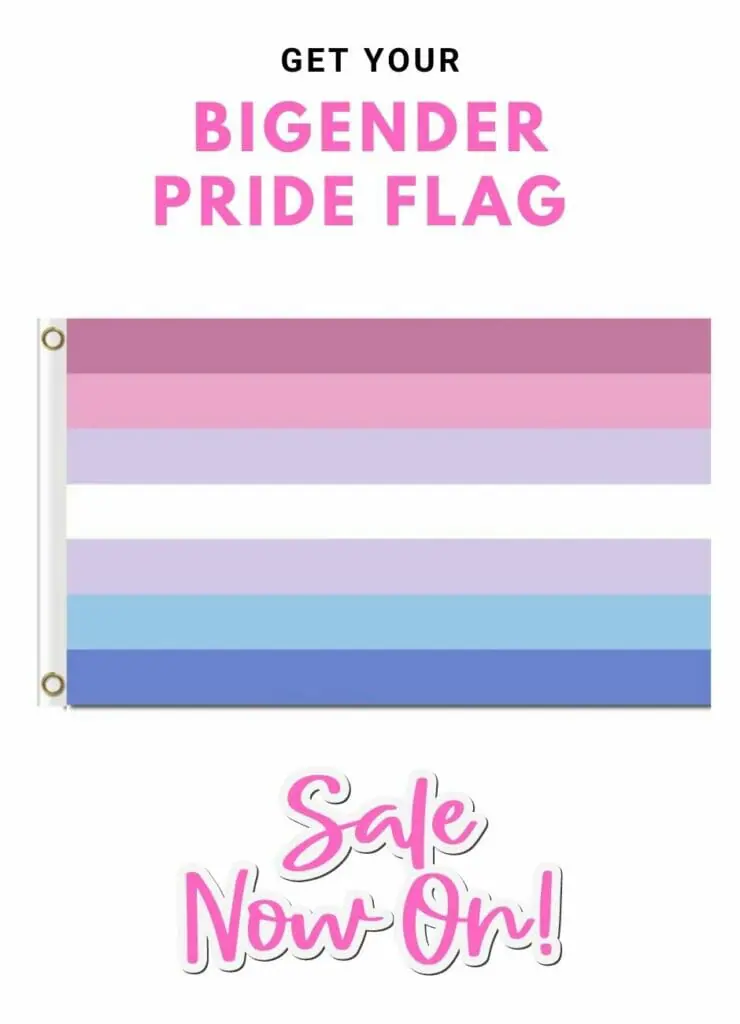Anyone can feel attached to or identify with a diversity of gender identities and/or sexual orientations. And as evermore definitions have been popularised over the years to embody the emotions and experiences of queer people, it can be hard to keep up.
If you are not totally absorbed in LGBTQ+ culture or the rainbow community, you may not appreciate these lesser-known sexual orientations and gender identities – most of which have a lack of representation in mainstream media.
One such term is bigender, so we are going to define and cover what does bigender mean, speak about the bigender pride flag, and then provide some tips to help you become a better ally to bigender people.
In this article we will cover...
What Does Bigender Mean?
We know now, that there are different gender identities and genders other than the man and woman binary. The term bigender is under the transgender umbrella and refers to someone with two different gender identities.
A bigender person is one with two different identities. They may experience these identities simultaneously or alternately. For instance, a bigender person could be a woman and a man, or be agender and a woman.
One of the most common misconceptions about bigender people is that their two genders should always be opposite to each other in the gender spectrum. However, this couldn’t be further from the truth. While there are those that may experience opposite genders, not every bigender person has the same experience.
Bigender is under the transgender identity. This simply means that bigender people do not align with the gender they were assigned at birth. A bigender person could also identify as nonbinary because their gender doesn’t fit into the gender binary of woman or man.
The term bigender was first used in the 1980s. It then became more fixed into the LGBTQ community due to efforts from Tumblr, the microblogging community in the 2010s where bigender identity gained its own pride flag from users. Thanks to their efforts, you can see now see the term ‘bigender’, as one of the gender options on other popular social media sites like Facebook.

Bigender Pride Flag Meaning
There are many different pride flags symbolizing most queer identities, so it should come as no surprise there is a flag for bigender people to proudly fly.
The first bigender flag was created by user no-bucks-for-this-does. It isn’t known when the exact date of creation was but it’s assumed to have been in existence before July 30th, 2014. Most of the color meanings for the bigender pride flag aren’t known. However, most people assume that blue is for masculinity/manhood, pink is for femininity/womanhood, and that purple is for a mix of genders or androgyny.
The white at the center of the bigender flag carries the same meaning as that of the transgender flag, which represents the nonbinary nature of bigender. Even though this flag is used widely, the owner is surrounded by controversy regarding abuse and transphobia. The bigender community has called for the creation of a new bigender flag.
Another alternate, but still popular bigender flag was created although no one knows who created it. Even so, speculations are that it was created before or on August 23rd, 2015. Its color meanings also, aren’t confirmed even though they could possibly mean the same thing as the original bigender flag.
Bigender Pride Day
Education, visibility, commemoration, and appreciation are all critical in promoting global acceptance and acknowledgment of queer identities and queer folx in general. And from experience, we know it is easier for bigendered individuals to talk to friends and loved ones – and to feel the love – when a worldwide day for bigender’s is observed. Not to mention it also helps foster awareness and increased sensitivities from society at large.
So, mark your calendar and do something special (even if it’s just a social media post!) for Bigender Pride Day next June 17th.
Other Bigender Information to Help You Be a Better Ally
No bigender experience is identical to another. You can’t tell whether someone is bigender by looking at them, observing their personality, or their physical aesthetic. None of these characteristics can provide a clue as to how a person identifies, and this is as true for bigendered individuals as it is for any gender or sexual orientation.
The first thing you should do as an ally to bigender people is to believe them when they tell you about their identity. Don’t try to argue them out of it or make the mistake of thinking you could know more about how they feel than they do. It could also help if you worked on your mindset. Working on your attitude means you challenge your concept of gender, sexuality, and sex.
After all, if you have any issues with understanding bigendered people, the root cause is bound in your understanding of gender and sexuality – not theirs. Educating yourself (as you are by reading about what does bigender mean?) is an excellent first step to increase your awareness and not make your lack of knowledge in this area a burden on them.
There aren’t any explicit rules or guidelines, but here are some thoughts on how you can be a better LGBT ally and support a loved one as you discover what it means to be bigender.

There’s no right or wrong way to express gender identity’
Gender is now known to be a social construct. As a result, there’s no right or wrong way for someone to express their bigender identity. It’s important to note, though, that a bigender individual might have no problems with using both masculine and feminine expressions or clothing. A bigender individual could also express themselves through gender-neutral fashion.
Bigender expression is unique. As a result, it’s vital to honor a bigender individual by allowing them to show you who they are. When you meet them for the first time, ask what their pronouns are and accept them as they are if they choose to open up to you.
Keep in mind that no one should be forced to come out if they don’t want to. In addition, you should also not burden anyone with the expectation of educating you about their gender identity.
Don’t Discriminate Against Them
There’s no difference between a bigender individual and others who identify as male or female. There’s therefore, no reason for you to treat a bigender person differently or discriminate against them in various situations.
Even though some terms may be different and confusing, respect is for everyone, and affirming someone else’s gender identity doesn’t take away from who you are as a person or your identity.

Leverage cisgender privilege
If you’re a cisgender person, you can further your support as a cisgender ally by leveraging your privilege so you can normalize the usage of pronouns. You can start by introducing yourself by your preferred pronouns or add them to your social media profiles or email signatures. When someone misgenders a bigender person, correct them and try as much as you can to use the correct pronouns.
If you happen to misgender someone, the best thing you can do is apologize fast, repeat what you were saying using the right pronouns, and then move on quickly. There’s no reason to offer long apologies and excuses because this will only make the person you misgendered start to console you while you were the one who initially caused them harm.
Be an ally even in their absence
If you hear the people around you making fun of nonbinary or transgender people, let them know that it’s not okay. Your loved one shouldn’t be present for you to tell someone off and let them know that the behavior they’re showing towards nonbinary or trans people isn’t acceptable.
If you think you’re bigender yet want to support other bigender people, remember that everyone’s experience of gender is different and valid and that we all deserve space and respect to be who we really are.

Respect their need for peace
if you have some ideas or thoughts about gender expansiveness, it’s not fair if you keep badgering your family member, partner, or friend about them. They are the board through which you learn about gender identity. If your loved one doesn’t feel like it, respect their need for peace and don’t force them to educate people about their identity.
If you really want to learn about gender, the best thing you can do is take initiative and try a little self-education by employing the use of online resources and forums. If you must ask questions, be extremely polite and thoughtful about them.
Remember that it’s never ok to ask anyone anything about their genitals or whether they’ve gone for genital surgery because it really is not your business.





